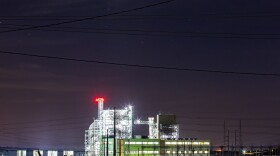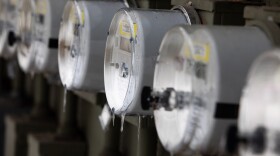Millions of Texans lost power Feb. 15, but the failure of the state's electric grid is the result of decisions made decades earlier — decisions like isolating the state's grid from the rest of the country.
That move was just the first of many that allowed Texas to experiment with energy deregulation on an unparalleled scale.
But how did Texas even get to a place where it choose deregulation?
Post-War Optimism
During much of the 20th century, Americans had only one utility company where they lived. That utility would generate the power, transmit the power to their neighborhoods, and install the transmission lines into their homes. Then the company would bill customers whatever it deemed appropriate.
After World War II, optimism flourished. People bought into the “American dream,” that democracy and capitalism would deliver a good job and a home in which to raise a family. This, of course, wasn’t the case for everyone, but generally what people consider to be hallmarks of a middle-class existence — televisions, appliances, even air conditioning — were birthed during this period.
Power companies felt they were part of that path, providing energy to subdivisions and factories that made the products of tomorrow.
Marketing helped brandish that image. Some local companies produced glowing documentaries with a big-voiced narrator talking about how they powered the economy.
There were commercial jingles. The companies did not have to advertise, but understood the importance of messaging.
A Shift In Mentality
At the time, there were bigger problems to fix, like communism. Questioning whether to regulate power companies was not top of mind. So, just a few decades after rural parts of Texas were electrified, people just took their utility for granted.
The mood changed in the 1960s. President John Kennedy was assassinated, the civil rights movement gained footing, and Americans were once again heading off to war. Dissent and mistrust of institutions were growing.
Then in 1965, the seemingly unthinkable happened: The lights went out on the East Coast.

The largest blackout (at the time) left some 30 million people across nine states without power for about 12 hours.
Crises Of Confidence
The blackout shook people’s confidence in the grid everywhere. Electricity became a commercial and national security concern. In 1968, the North American Electric Reliability Council (NERC) was formed to promote stability and manage bulk transmission across the three grids in the continental U.S. — East, West and Texas — along with Mexico and Canada.
Texas power companies had little interest in federal regulations, but NERC required an entity to, at the very least, manage connections beyond the state. Though Texas had its own grid, it still had connections with the two U.S. grids and Mexico. Thus, in 1970, the Electric Reliability Council of Texas, or ERCOT, was created.
But just as ERCOT was getting up and running, there were other crises of confidence.
In 1973, we had what was simply known as the "energy crisis." There was an armed conflict between Israel and a group of Arab states that October. The U.S. supported Israel, drawing a reaction from the Organization of Petroleum Exporting Countries (OPEC).
"The Arab members of OPEC embargo oil to the United States,” said Sarah Stanford-Mcintyre, assistant professor and co-director of the Engineering, Ethics, & Society at the University of Colorado-Boulder. “And by this point, oil production has shifted out of the United States into the Middle East. And so, these nations know that they have a political weapon here, which is oil supply.”
This had a huge public impact, she said, not only on policy, but also on the political consciousness and public understanding of America's place in the world.
The crisis was quickly followed by the political scandal that brought down the Nixon presidency. By the time Jimmy Carter was elected in 1976, the public’s faith that government could fix energy — or anything — was at a nadir.
A Deregulation Mantra
The optimism that carried Americans through the 1950s was gone. Instead, they were being asked to conserve energy. Turn the thermostat up. Put on a sweater.
And when conserve messaging fell flat, business leaders and politicians found what they thought could be the solution: deregulation.
It was the buzzword for quite a while and created new opportunities and optimism in industries where there was none before. For 20 years, deregulating became a mantra for Republicans and Democrats alike.
Carter's Public Utilities Regulatory Policies Act of 1978 (PURPA) opened the door. It was meant to bolster more efficient energy production, and promoted the development of alternative and renewable energy.
Executives in the Texas energy industry started to see themselves as part of the solution by looking for new ways to produce power. PURPA laid the foundation for the state to become the leader in wind energy that it is today. It also allowed new producers of energy to plug into the grid and provide power to the system, undoing the stranglehold the mini-monopolies had had.
But the U.S. didn't stop there. More than a dozen deregulatory acts were passed over the next two decades. To be clear, certain aspects of the industries were still regulated, but legislation allowed the government to step back and let markets set some of the rules.
Deregulation was touted as good for consumers. The overall attitude was: Let's let the market decide.
Telecommunication companies were broken up, eventually becoming the broadband, entertainment streaming services, and mobile phone companies we rely on today.
Airlines were allowed to fly routes where they could be most profitable, turning the industry into the hub-and-spoke system.
Deregulation continued under the presidencies of Ronald Reagan, George H.W. Bush, and — probably most pertinent to the February blackouts — Bill Clinton.
“There was a new piece of legislation out of the Clinton administration which revised what this organization called the Federal Energy Regulatory Commission, how they're supposed to regulate industry,” Stanford-Mcintyre said. “And these are famously the laws that end these regional monopolies.”
The private power companies that once generated, transmitted and sold power to customers would soon have competition to provide one or more of those services.
Taking Advantage In A Void
But had consumers been asking for a deregulated market? In the end, there seems to have been one motivator.
“I think there was a lot of profit potential there for energy companies and for folks who wanted to invest in energy companies,” Stanford-Mcintyre said. “It wasn’t so much concern necessarily for consumers, but it had a lot to do with this realization that if there isn’t a government-backed monopoly then there’s all kinds of potential for investment.”
The new system rewarded cost efficiency. The provider with the lowest energy prices won, ignoring weatherization warnings and taking plants offline to save on labor. And those two factors would figure prominently in why the lights were out for so long during February's winter storm.












